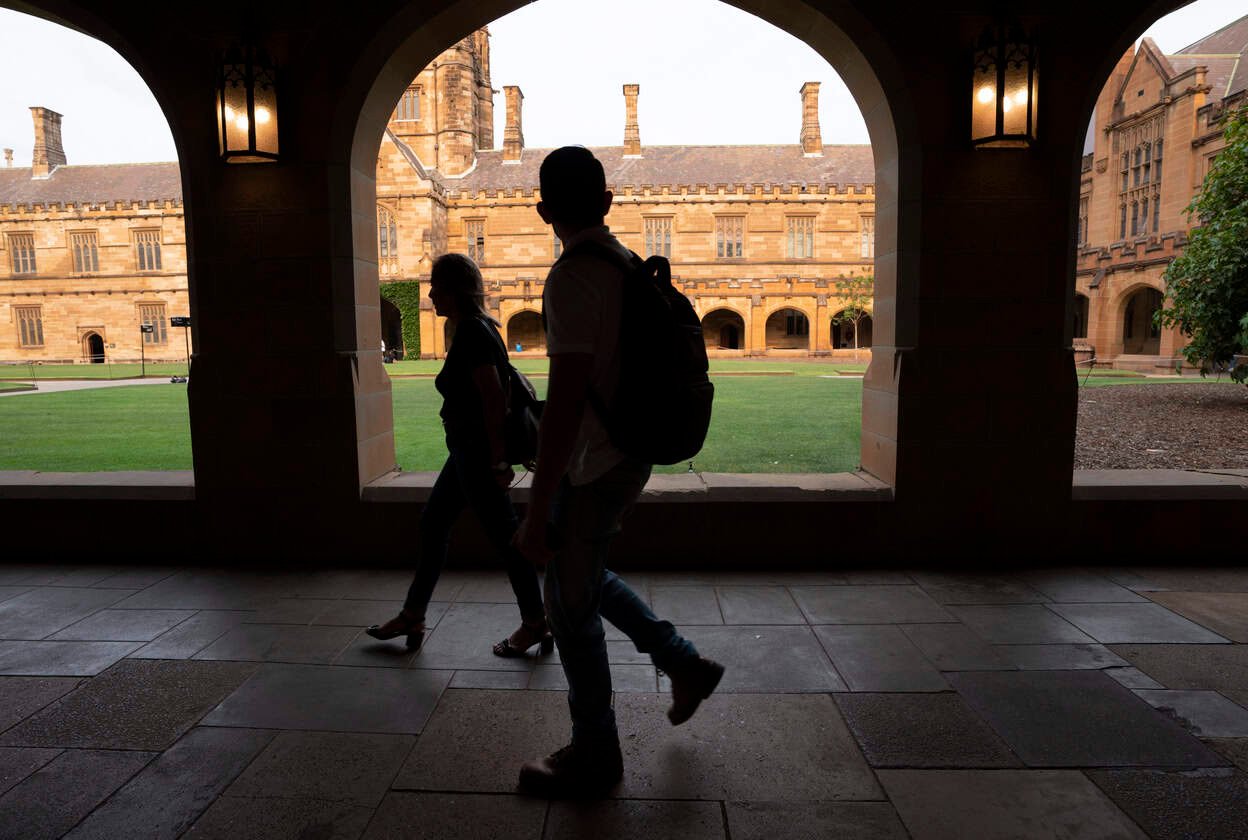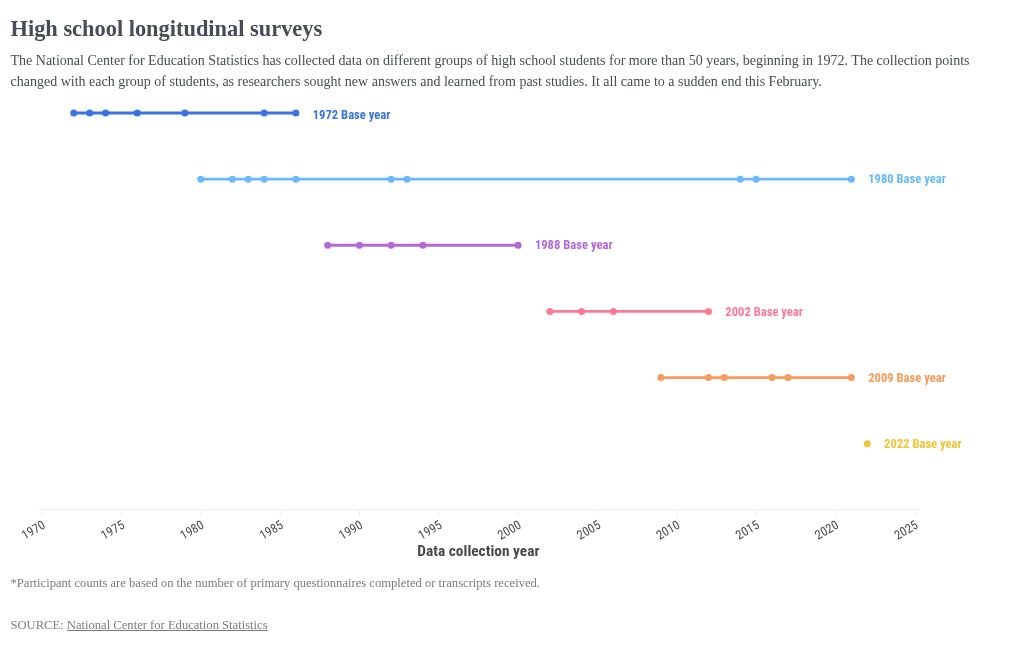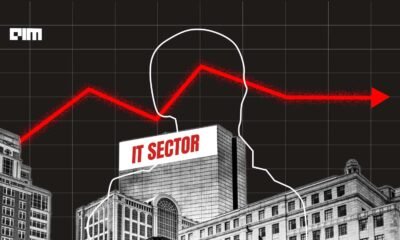Education
UK still top choice for pathway students despite policy changes

International students are placing getting a quality education over policy developments – with the UK keeping its spot as the preferred desitnation for 80% of nearly 1,000 pathway students surveyed by NCUK.
A new report covering the survey’s findings analyses data from 921 students across 88 countries studying an international foundation year or Master’s preparatino programs, looking at their motivations for studying in top destinations, as well as other preferences.
It found that Australia was the second most popular choice, with 4% of students surveyed marking it as their preference, followed by Canada, the US, New Zealand and Ireland at 3%. Meanwhile, the most coveted programs are business and computer science, as the preferred subjects for just under a third (31%) of respondents.
Students’ continued preference for the UK comes in spite of a slew of policy changes affecting international students. In May, the government unveiled its long-awaited immigration white paper, setting out the way Keir Starmer’s Labour party intends to tackle migration over the coming years.
It included plans to reduce the Graduate Route by six months to a total of 18 months, as well as new compliance metrics that higher education institutions must in order to continue recrutiing international students. Tougher Basic Compliance Assessment (BCA) requirements are set to take effect this month, meaning that universities will face penalties if more than 5% of their students’ visas are rejected, down from 10%.
And last September, the UK increased international student maintenance requirements for the first time since 2020. Under the new rules, students coming to London must show evidence of having £1,483 per month, while studying outside of London need proof that they have at least £1,136 per month.
But NCUK’s chief marketing officer Andy Howells pointed out that students are looking beyond arbitrary political decision when choosing their preferred study destination, thinking instead about their long-term prospects.
“This research demonstrates that international students are sophisticated decision-makers who look beyond political headlines to focus on educational quality and career outcomes,” he said. “While policy changes generate significant discussion in our sector, students are primarily motivated by the academic excellence and opportunities that institutions can provide.”
The survey found that, of a sample size of 646 students, just 12% who said they were considering studying in the UK said that financial requiremwnr increases would stop them from applying to UK instiutuons.
However, the popularity of other major study destinations were ore impacted by political headwinds, the survey found.
Over a third (36%) interested in applying the Australian institutions said that proposed international enrolment caps would affect their decision, while 26% of those looking to study in Canada said they would no longer apply to Canadian institutions over policy changes – particularly changes to the country’s postgraduate work permit scheme.
And almost four in 10 (38%) considering the US said Donald Trump’s second presidency would negatively impact their choice to study in America.
For the majority of students surveyed (69.9%), education quality is the primary driver leading them to seek study abroad opportunities, closely followed by enhanced career development opportunities (56.4%) and gaining new knowledge (55.2%).
The survey also shone a light on students’ post-graduation plans. Half of respondents said they wanted to stay in their study destination, with 31% planning to work and 19% looking at further studies.
This research demonstrates that international students are sophisticated decision-makers who look beyond political headlines to focus on educational quality and career outcomes
Andy Howells, NCUK
But a growing number of students plan to return to their hoe country immediately after graduating, with 23% saying they want to do this – up from 18% in last year’s survey.
Immigration has continued to be a hot topic in the UK as the anti-immigration Reform party grows in popularity.
Just earlier this week, Home Secretary Yvette Cooper drew ire from the international education sector after announcing that the government will be tougher on overseas students who make asylum claims that “lack merit” as a means to stay in the country after their visa expires.
Some 10,000 students have already been texted and emailed warning them that they will not be allowed to stay in the UK if they have no legal right to remain and explicitly warning them against making bogus asylum claims.
Education
A window into America’s high schools slams shut

This story was reported by and originally published by APM Reports in connection with its podcast Sold a Story: How Teach Kids to Read Went So Wrong.
The choices you make as a teenager can shape the rest of your life. If you take high school classes for college credit, you’re more likely to enroll at a university. If you take at least 12 credits of classes during your first year there, you’re more likely to graduate. And those decisions may even influence whether you develop dementia during your later years.
These and insights from thousands of other studies can all be traced to a trove of data that the federal government started collecting more than 50 years ago. Now that effort is over.
On a single day in February, the Trump administration and its Department of Government Efficiency canceled a long-running series of surveys called the high school longitudinal studies. The surveys started in 1972, and they had gathered data on more than 135,000 high school students through their first decade or so of adulthood — sometimes longer.
“For 50 years, we’ve been mapping a timeline of progress of our high school system, and we’re going to have a big blank,” said Adam Gamoran, who leads the William T. Grant Foundation and was nominated to head up the Education Department’s research and statistics arm under President Biden, but was never confirmed. “That’s very frustrating.”
The data collection effort has been going on since before the founding of the modern Department of Education. Thousands of journal articles, books, dissertations and reports have relied on this data to form conclusions about American education — everything from how high school counselors should be spending their days to when students should start taking higher-level math classes.
The Department of Government Efficiency first canceled contracts for the collection of new long-term high school data and then started laying off staff. The National Center for Education Statistics used to have nearly 100 employees. Today, only three remain.
“The reduction — annihilation — of NCES functionally is a very serious issue,” said Felice Levine, former executive director of the American Educational Research Association, one of the groups suing the administration over these actions. “Maybe it doesn’t appear to be as sexy as other topics, but it really is the backbone of knowledge building and policymaking.”
The Department of Education is reviewing how longitudinal studies “fit into the national data collection strategy based on studies’ return on investment for taxpayers,” according to an email from its spokesperson. The statement also said the department’s Institute of Education Sciences, which is in charge of overseeing research and gathering statistics, remains committed to “mission-critical functions.”
“It seems to me that even if you were the most hardcore libertarian who wants the government to regulate almost nothing, collecting national statistics is about the most innocuous and useful thing that a government could do,” said Stuart Buck, executive director of the Good Science Project, a group advocating less bureaucracy in science funding.
“The idea of a Department of Governmental Efficiency is an excellent idea, and I hope we try it out sometime,” he said. But the effort, “as it currently exists, I would argue, is often directly opposed to efficiency. Like, they’re doing the exact opposite.”
He likened the approach to “someone showing up to your house and claiming they saved you $200 a month, and it turns out they canceled your electricity.”
Related: Become a lifelong learner. Subscribe to our free weekly newsletter featuring the most important stories in education.
Since the effort began in the early 1970s, the federal government has collected data on six large groups of high school students, each numbering in the tens of thousands. Researchers surveyed each group at least once during high school, along with their parents and teachers. Researchers then contacted the students periodically after that, generally over the course of a decade or so — sometimes longer. They collected transcripts and other documents to track progress, too. In total, the data set contains thousands of variables.
The studies are called longitudinal, because they take place over a long time. The methodology is similar to studies that track twins over their lifetimes to determine which traits are genetic and which are caused by their experiences. Such data sets are valuable because they allow researchers to tease out effects that can’t be seen in a single snapshot, but they are rare because they require sustained funding over decades. And the high school data covers a large number of participants selected to represent the national population, giving insights that can be broadly applicable across states.
That vast repository of data affects students “indirectly, but profoundly,” said Andrew Byrne, who runs the math department at Greenwich High School in Connecticut. For example, research based on the data has shown that high school students who take classes for college credit have a better chance of finishing their bachelor’s degrees on time.
Byrne said that research informed the school’s decision to start offering a new Advanced Placement precalculus class when the College Board unveiled it two years ago. The new offering gave some high school students in lower-level math classes the opportunity to get college credit for the first time.
“Success in AP precalculus could empower them to believe they can succeed in college-level classes overall,” Byrne said. A student probably would not read the academic research, but “they live the results of the decisions that data informs,” he said.
Follow-up surveys for the group first contacted in 2009 — made up of people who started high school during the Great Recession — and for students who were high school freshmen in 2022 have been canceled. The latter group, who were middle schoolers during the pandemic, will be graduating next year.
Elise Christopher oversaw the high school longitudinal studies at the National Center for Education Statistics until she was laid off in March along with dozens of her colleagues. Christopher, a statistician who worked at the center for more than 14 years, is concerned about the data that was scheduled to be collected this year — and now won’t be.
“We can’t just pick this back up later,” she said. “They won’t be in high school. We won’t be able to understand what makes them want to come to school every day, because they’ll be gone.”
Researchers were hoping to learn more about why chronic absenteeism has persisted in schools even years after Covid-19 abated, Christopher explained. They were also hoping to understand whether students are now less interested in attending college than previous generations.
“Every single person in this country who’s been educated in the past 50 years has benefited from something that one of these longitudinal surveys has done,” she said.
Levine said the planned follow-up with students from the 2009 high school group would have helped reveal how a greater emphasis on math, science and technology in some states has influenced student decision-making. Were they more likely to study the hard sciences in college? Did they continue on to careers in those fields?
“These are the kinds of things that the public wants to know about, families want to know about, and school administrators and counselors want to know about,” she said.
Related: Suddenly sacked
About 25,000 people who completed the high school survey in 1980 were contacted again by researchers decades later.
Rob Warren, the director of the University of Minnesota’s Institute for Social Research and Data Innovation, is hoping those people — now in their 60s — may help him and other researchers gain new insights into why some people develop dementia, while others with similar brain chemistry don’t.
“Education apparently plays a big role in who’s resilient,” Warren said. “That’s kind of a mystery.”
The people who participated in the high school study may offer a unique set of clues about why education matters, Warren explained.
“You need all that detail about education, and you need to be able to see them decades later, when they’re old enough to start having memory decline,” he said. Other studies can measure cognition, but to measure whether education plays a role in dementia outcomes, “you can’t really test (that) with other data,” he said.
So Warren’s team got permission from the federal government to contact the group in 2019. Researchers asked all the usual types of questions about their jobs and lives, but also gave them cognitive tests, asked medical questions, and even collected samples of their blood to monitor how their brains were changing as they aged.
Warren is continuing his research even though the federal government has canceled future high school surveys. But the staffing cuts at the Department of Education have hampered his ability to hand the data off to the center or share it with other researchers. To do that, he needs permission from the Department of Education, but getting it has been a challenge
“Very often you don’t hear anything back, ever, and sometimes you do, but it takes a very long time,” Warren said. Even drafting legal agreements to make the data available to the National Institutes of Health — another federal agency, which funded his data collection effort and would be responsible for handling the medical data — has been a bottleneck.
Such agreements would involve a bunch of lawyers, Warren said, and the Department of Education has laid off most of its legal team.
If the data isn’t made available to other researchers, Warren said, questions about dementia may go unanswered and “NIH’s large investment in this project will be wasted.”
Kate Martin contributed to this report.
Education
Let’s reshape the liberal arts with a focus on applied learning, internships and training for jobs of the future and let faculty lead the way

Today’s colleges face an uncertain future and need to be more relevant and more connected to the world of work to thrive.
The liberal arts, which have evolved throughout history to meet the needs of society and the state of knowledge, were created for the industrial era. They are badly dated and must be rethought to prepare students for the global, digital, knowledge economy in which they will live their lives.
Vocational education prepares people for their next job. But liberal arts education is designed to do more — to “future-proof” students. By helping students learn to solve problems and think critically, the liberal arts prepare students not for their next job but for jobs that don’t exist. And with the world changing rapidly, with new technologies replacing many jobs and employers demanding proof of skills, the liberal arts need to be future-proofed themselves.
Related: Interested in innovations in higher education? Subscribe to our free biweekly higher education newsletter.
The liberal arts are most successful when they have one foot in the library (the accumulated knowledge of humanity) and one foot in the street (the real world of the marketplace, politics and social interaction), to paraphrase the social reformer Jane Addams.
These are times of rapid change. We are simultaneously experiencing demographic, economic, technological and global changes, and colleges and universities cannot afford to lose traction with the street.
The historian Henry Adams attended Harvard in the mid-19th century and lamented that he received an 18th-century education in Cambridge — and would then live his life in a world plunging into the 20th century. Our colleges and the liberal arts face a similar challenge today.
But these challenges are not insurmountable. Colleges and universities can regain their connection with the street by taking several important steps:
- Introduce a new competency-based core curriculum that provides students with the skills, knowledge and values to thrive in a global, digital, knowledge economy.
- Ensure that all students receive four years of career counseling, beginning with orientation, and participate in some form of internship or apprenticeship. Each student can be assigned an academic adviser (a faculty member) and a career adviser (a career counselor, alumnus or an accomplished professional in the student’s intended career field). Internships and apprenticeships might include research opportunities, community development placements, humanities apprenticeships or other practice-based experiences. Even before students arrive on campus, the university will help them explore their career interests and begin to match them with business, cultural, artistic and scientific opportunities in the area, or with alums or partners of the college.
- Establish a competency transcript to demonstrate career readiness. Students should graduate with both an academic transcript and a second transcript that verifies specific skills and competencies gained through coursework and experiential learning. The second transcript will include microcredentials certifying proficiency in highly sought skills, aligning academic education and career readiness.
- Combine professional schools with undergraduate learning to give professional schools a stronger foundation in the fields that fuel them and to expand the liberal arts to include the practical applications they foster. This reorganization will integrate the liberal arts and professional education, providing an opportunity to fundamentally rethink programs, departments and majors, including interdisciplinary and “blended” options to foster collaboration and provide both breadth and depth.
- Establish a research center for applied liberal arts that will serve as the engine driving the plan, fueling future innovation and developing new designs for courses, programs, experiential learning and teaching methods while introducing new approaches using artificial intelligence and virtual reality.
- Let the faculty lead. The best way to accomplish these goals is to bring the faculty together and give them room to reinvent the institution. They have been waiting to innovate and share their insights on what works in classrooms and what students need.
Related: OPINION: Meet certificates and “microcredentials” — they could be the future of higher education
We have the capacity to avoid Henry Adams’ fate. But we need to act now, not by rejecting the liberal arts, but by embracing them and reshaping them. We need them in this time of dramatic change and social transformation more than ever before.
By reconnecting the library with the street, we can make all students — and our learning programs — future-proof.
Arthur Levine is president of Brandeis University and, most recently, the co-author, with Scott Van Pelt, of the bestselling higher education book “The Great Upheaval: Higher Education’s Past, Present, and Uncertain Future.” His new book (also with Scott Van Pelt) is “From Upheaval to Action: What Works in Changing Higher Ed” and will be published on March 3, 2026, by Johns Hopkins University Press.
Contact the opinion editor at opinion@hechingerreport.org.
This story about liberal arts education was produced by The Hechinger Report, a nonprofit, independent news organization focused on inequality and innovation in education. Sign up for Hechinger’s weekly newsletter.
Education
Empowering Minds: The Rise of Artificial Intelligence in Education Curricula

VMPL
New Delhi [India], September 10: The education landscape is one of the most transformed domains of Artificial Intelligence (AI), as institutions across the globe realise its significant potential. From personalised learning experiences to AI-powered assessments, AI is redefining how knowledge is created, delivered, and absorbed. Hence, educational institutions have adopted robust frameworks to integrate AI into their curriculum, ensuring that students not only understand the nuances of the technology but also learn to apply it ethically and effectively.
“At Les Roches, AI is not treated as a stand-alone subject but as a natural extension of our experiential model of education. Our strategy is to integrate it into the learning journey wherever it makes sense, so that students encounter AI in authentic, industry-relevant contexts. In practice, this means combining classroom theory with hands-on exposure to real technologies: revenue management simulators, marketing platforms, robotics, and AI-driven personalization systems, among others,” says Ms. Susana Garrido (MBA), Director of Innovation and EdTech & Clinical Professor in Marketing at Les Roches.
Echoing similar sentiments, Dr. Sandeep Singh Solanki, Dean of Post Graduate Studies at BIT Mesra, highlights a multifaceted approach to seamlessly integrate AI into the academic ecosystem.
”We have adopted a multifaceted approach to integrate AI into our curriculum, including teaching students about contemporary AI tools and how they can be an enabler for academic and career growth. Moreover, we are also emphasising consistent teacher training to effectively blend AI into our pedagogy for enhanced learning outcomes. In addition, we are fostering strategic industry partnerships to offer students hands-on exposure to real-world AI applications and emerging technologies,” says Dr. Solanki.
With a firm view that AI must be a part of the student learning journey, Mr. Kunal Vasudeva, Co-founder & Managing Director of the Indian School of Hospitality, has made it a compulsory subject for all students.
“We are very clear that AI has to be part of the student journey, and we have made it a compulsory subject from this year onwards. It is not something optional or an ‘elective.’ At the same time, we’re learning as we go. Our facilitators are being upskilled in using AI as a tool, and we’re in active conversations with partners such as Marriott, Accor, Nestle Professional, and JLL to see how best to bring real applications into the classroom,” says Mr. Vasudeva.
Educational institutions are also actively equipping students with the key knowledge and skills to not only understand but also harness the transformative power of artificial intelligence in ways that are both effective and responsible.
“We emphasize responsible AI use as much as technical competence. Students are trained to balance efficiency with ethics by embedding modules on AI ethics, data privacy, and bias management within courses. Conducting workshops on digital hygiene and cybersecurity helps sensitize students about risks in AI adoption. Encouraging debates and roleplays on real-world ethical dilemmas in AI ensures that graduates not only know how to use AI but also how to use it responsibly in decision-making,” says Prof (Dr.) Daviender Narang – Director, Jaipuria Institute of Management, Ghaziabad.
Airing similar viewpoints, Dr. Shiva Kakkar, AI-Transformation, Jaipuria Institute of Management (Seth MR Jaipuria Group), states, “Our philosophy is simple: AI should increase cognitive effort, not reduce it. When students use AI for self-reflection on their CVs or practice interviews, the system doesn’t hand over answers but asks harder questions. This nudges them to articulate their experiences better, spot weaknesses, and think deeply. On ethics, we train students to treat AI like a colleague whose work must always be verified. They learn to recognize bias, challenge hallucinations, and decide when to rely on human judgment.”
Meanwhile, institutions are navigating a complex terrain that includes upskilling faculty, updating legacy systems, and ensuring equitable access to AI tools for all students. While enthusiasm for AI integration is high, the path forward demands sustained investment, collaborative innovation, and a deep commitment to ethical education.
“Integrating AI into pedagogy inevitably comes with challenges, and at Les Roches one of the most significant has been the varying levels of comfort among our faculty. We have professors who are seasoned hoteliers with decades of operational expertise, and others who are digital natives more at ease with emerging technologies. To address this, we developed a progressive, sequential approach where new tools are introduced step by step. Faculty receive training, try out tools in safe environments at their own pace, and gradually bring them into the classroom,” says Ms. Garrido.
Similarly, Dr. Solanki underlines that consistent upskilling of educators and data privacy remain key challenges amid the AI revolution.
“One of the primary challenges that we faced was to ensure that our faculty was sufficiently trained to utilise and educate students about AI tools. This demands rapid, continuous upskilling, and we are significantly investing in it. Another major challenge revolved around data privacy and ethical usage, especially when students were using AI platforms for academic support. To prevent the misuse of these tools, support and guidelines are provided,” said Mr. Solanki.
Furthermore, industry partnerships are playing a crucial role in accelerating AI integration within academic environments. By collaborating with leading corporations and tech innovators, educational institutions are bridging the gap between theoretical learning and real-world application.
“Industry partnership is the most critical aspect for us. We will do whatever it takes to understand, apply, and work with the industry so that the ultimate beneficiary is the student. Our role is to stay in constant motion with the industry, bring that knowledge back, and reinforce it in the classroom. Anything that advances knowledge and critical thinking for our students is a priority. Partnerships with groups like Marriott, Accor, Nestle Professional, and JLL allow us to see how AI is being applied on the ground,” says Mr. Vasudeva.
Similarly, Dr. Kakkar states that industry collaborations for AI are a win-win situation for both academic institutions and industry players.
“We look for partnerships that deepen learning. We are in discussions with both global and Indian AI initiatives to bring cutting-edge exposure to our students. At the same time, the tools we are developing for our classrooms are also being adapted for corporate learning and leadership development. In effect, the classroom becomes our laboratory, and industry gets a tested, field-ready solution,” says Dr. Kakkar.
Inclusivity remains the foundation of AI integration in esteemed educational institutions. Acknowledging that access to technology and digital literacy varies across student demographics, institutions are designing AI-enabled learning environments that are accessible, equitable, and supportive of diverse learning requirements.
“Inclusivity is our core value. We ensure AI as a simplifier. By using AI-driven learning platforms, students from non-technical backgrounds can overcome learning gaps through personalized support with the tools powered by AI. Our institution provides guided workshops and resources so that all students, irrespective of prior exposure, can benefit equally. We also showcase AI not just as a tool for IT or analytics, but for marketing creativity, financial risk management, HR analytics, and beyond–ensuring inclusivity across disciplines,” says Prof (Dr.) Narang.
In a similar vein, Dr. Solanki states, “We ensure that our AI-enabled learning environments are accessible to all students, irrespective of their socio-economic backgrounds and levels of digital literacy. We also offer foundational AI knowledge to every student through open elective courses and MOOC courses to enable them to effectively use AI tools. The institute follows NEP guidelines, and we advocate for every department to adequately introduce AI in their course curriculum. These endeavours reflect our commitment to equity in education.”
It is also important to mention that teacher empowerment is central to unlocking the full potential of AI in academic settings. As facilitators of learning, educators must be equipped not only with technical know-how but also with the confidence and creativity to integrate AI meaningfully into their teaching practices.
“Our faculty are at the heart of the Les Roches experience and empowering them to use AI confidently is one of our top priorities. We provide structured training programs that focus not just on technical skills but also on practical applications–how AI can help design more engaging classes, create better assessments, or streamline teaching preparation. Tools are rolled out gradually, so professors can build confidence without pressure,” says Ms. Garrido.
In agreement with her stance, Dr. Kakkar states, “We see teachers not as ‘users of AI tools’ but as designers of AI-enabled learning experiences. Our workshops focus on helping faculty rethink pedagogy: How can AI generate counterarguments in a strategy class? How can it provide alternative data sets in a finance discussion? How can it surface hidden biases in an organizational behaviour exercise? Teachers are also given insights into student progress through analytics, so instead of spending time on repetitive feedback, they can focus on mentoring and higher-order guidance.”
As AI continues to reshape the educational landscape, prominent institutions are demonstrating that its successful integration lies in a holistic approach. These institutions are not only preparing students for the future but are also redefining what meaningful, responsible, and innovative education looks like in the age of AI.
(ADVERTORIAL DISCLAIMER: The above press release has been provided by VMPL. ANI will not be responsible in any way for the content of the same)
(This content is sourced from a syndicated feed and is published as received. The Tribune assumes no responsibility or liability for its accuracy, completeness, or content.)
-

 Business2 weeks ago
Business2 weeks agoThe Guardian view on Trump and the Fed: independence is no substitute for accountability | Editorial
-
Tools & Platforms4 weeks ago
Building Trust in Military AI Starts with Opening the Black Box – War on the Rocks
-

 Ethics & Policy1 month ago
Ethics & Policy1 month agoSDAIA Supports Saudi Arabia’s Leadership in Shaping Global AI Ethics, Policy, and Research – وكالة الأنباء السعودية
-

 Events & Conferences4 months ago
Events & Conferences4 months agoJourney to 1000 models: Scaling Instagram’s recommendation system
-

 Jobs & Careers2 months ago
Jobs & Careers2 months agoMumbai-based Perplexity Alternative Has 60k+ Users Without Funding
-

 Education2 months ago
Education2 months agoVEX Robotics launches AI-powered classroom robotics system
-

 Podcasts & Talks2 months ago
Podcasts & Talks2 months agoHappy 4th of July! 🎆 Made with Veo 3 in Gemini
-

 Education2 months ago
Education2 months agoMacron says UK and France have duty to tackle illegal migration ‘with humanity, solidarity and firmness’ – UK politics live | Politics
-

 Funding & Business2 months ago
Funding & Business2 months agoKayak and Expedia race to build AI travel agents that turn social posts into itineraries
-

 Podcasts & Talks2 months ago
Podcasts & Talks2 months agoOpenAI 🤝 @teamganassi





















